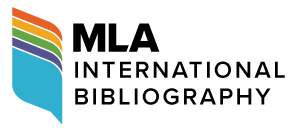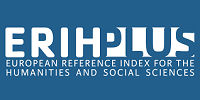From the transcultural foundations of picaresque to the terminology debate : picaresque to picarism?
DOI:
https://doi.org/10.7203/HYBRIDA.2.20592Keywords:
Picaresque, transcultural, tale, social inequality, picarism Abstract
Abstract
This study is a reflection on the basic reasons behind the transculturality of the picaresque. It explains why picaresque culture and writing can go one side to the other of literary and geographic boundaries. From this perspective, the analysis questions the foundation of the picaresque. On the one hand, it emerges that the picaresque poetics draws inspiration from the story, which is a cultural and literary transcultural practice. On the other hand, social inequality, being the trigger of the picaresque, is also unique to humanity and therefore cross-border. Consequently, the study argues that the picaresque owes also its transculturality to the tale and social injustice that underlie it and which are, themselves, inherently transcultural. This approach revisits the track of influence often summoned in studies on the practice of the picaresque outside Spain or Europe. It proposes the idea of the existence of a non-contact resemblance that involves a terminological debate that this reflection does not fail to lead to a terminology suggestion: picarism.
 Downloads
Downloads
 References
References
Acinas, B. (1997). Entre l’autobiographie et le picaresque: Maurice Sachs. Les Lettres Romanes, 51(1-2), 95-105. https://doi.org/10.1484/J.LLR.4.00958
Bakhtine, M. (1978). Esthétique et théorie du roman. Gallimard.
Bataillon, M. (1931). Le roman picaresque. La Renaissance du livre.
Bataillon, M. (1958). Introduction à la vie de Lazarillo de Tormès. Montaigne.
Belinga, E. (1977). L’esthétique littéraire dans la littérature orale. Université de Yaoundé.
Bjornson, R. (1977). The Picaresque Hero in European Fiction. University of Wisconsin Press.
Bodo, C. (2016), La question du picaresque dans la littérature africaine. Théories et pratiques. L’Harmattan.
Caliban, n° 20 (1983). Aspects du picaresque en Angleterre et aux États-Unis , Université de Toulouse-Le-Mirail. https://www.persee.fr/issue/calib_0575-2124_1983_num_20_1
Chemain, R. (1982). Errance picaresque, voyage initiatique et roman africain : Edouard Gaede. In E. Gaede (ed.), Trois figures de l’imaginaire littéraire : les odyssées, l’héroïsation de personnages historiques, la science et le savant (pp. 103-110). Belles Lettres.
Chemain, R. (1986). L’imaginaire dans le roman africain d’expression française. L’Harmattan.
Chevrier, J. (1974). Roman et société en Afrique noire. In Production littéraire et situations de contacts interethniques. Etudes préliminaires - IDERIC, 7 (pp. 158-168). www.persee.fr/doc/epide_0768-5289_1974_ant_7_1_898
Diallo, B. (1926). Force bonté. Rieder.
Escarpit, R. (1987 [1960]). L’humour. PUF.
Euvremer, N. (2000). La littérature espagnole au Siècle d’or. Armand Colin.
Even-Zohar, I. (1979). Polysystem Theory. Poetics Today, 1(1/2): 287-310. https://doi.org/10.2307/1772051
Foucault, M. (1966). Les mots et les choses. Une archéologie des sciences humaines. Gallimard.
Greimas, A. J. (2002 [1966]). Sémantique structurale. PUF.
Jippensha, I. (1998). À pied sur le Tôkaidô : roman picaresque. Philippe Picquier. Traduction du japonais par Jean-Armand Campignon.
Kane, M. (1981). Essai sur les Contes d’Amadou Coumba : du conte traditionnel au conte moderne d’expression française. Nouvelles éditions africaines.
Mancing, H. (1996). The Protean Picaresque. In G. Maiorino (ed.) The Picaresque. Tradition and Displacement (pp. 273-291). University of Minnesota Press.
Marcheix, D. (1972). A partir du Lazafillo de Tormes : Permanence et renouveau du roman picaresque dans la littérature française du XXe siècle : (Jean Cayrol : Je vivrai l’amour des autres, Jean Genet : Le journal d’un voleur) [Thèse de doctorat, Université de Limoges]. https://www.sudoc.fr/010917950
Mignolo, W. (2015). La désobéissance épistémique. Rhétorique de la modernité, logique de la colonialité et grammaire de la décolonialité. Peter Lang.
Molho, M. (1968). Introduction aux romans picaresques espagnols. Gallimard.
Monénembo, T. (2000). L’aîné des orphelins. Seuil.
Montandon, A. (25/09/2020). Sociopoétique. Sociopoétiques. https://revues-msh.uca.fr:443/sociopoetiques/index.php?id=640
Morin, M., & Bertrand, C. (1979) : Le Territoire imaginaire de la culture. Hurtubise Hmh.
Moura, J-M. (1998). L’Europe littéraire et l’ailleurs. PUF.
Mouralis, B. (1970). Le roman africain et les modèles occidentaux. Annales de l’Université d’Abidjan (Série D Lettres), T3, 87-92.
N’Da, P. (1984). Le conte africain et l’éducation. L’Harmattan.
Nancy, J-L. (1997). Hegel et l’inquiétude du négatif. Hachette.
Nepveu, P. (1989). Qu’est-ce que la transculture ? Paragraphes. Université de Montréal, Département des Études françaises, 2, 15-31.
Nganang, P. (2007). Manifeste d’une nouvelle littérature africaine. Pour une écriture préemptive. Homnispères.
Oyono, F. (1954). Une vie de boy. Julliard.
Petit, J. (1971). Permanence et renouveau du picaresque. In E. Mansuy (éd.) Positions et oppositions sur le roman picaresque (pp. 45-53). Klincksieck.
Pinçonnat, C., Serrier, T., & Tettamanzi, R. (2003). Échos picaresques dans le roman du XXe siècle. Atlande.
Propp, V. (1970). Morphologie du conte. Seuil.
Semujanga, J. (1999). Dynamique des genres dans le roman africain. Éléments de poétique transculturelle. L’Harmattan.
Senghor, L. S. (1990). Œuvre poétique. Seuil.
Souiller, D. (1980). Le roman picaresque. PUF.
Todorov, T. (1968). Qu’est-ce que le structuralisme ? 2. Poétique. Seuil.
Viëtor, K. (1986). Théorie des genres. Seuil.
Vincensini, J-J. (2002). Conte : Paul A. ; Denis S. J. ; Alain V. D. Saint-Jacques, P. Aron, & A. Viala (dirs.). Le dictionnaire du littéraire (pp. 145-146). PUF.
Whitman, D. (1979). The Picaresque in African Fiction, in Ba Shira. 7, 44-52.
Published
How to Cite
-
Abstract685
-
HTML (Français )93
-
PDF (Français )464
Issue
Section
License
![]()
All the documents in the OJS platform are open access and property of their respective authors.
Authors publishing in the journal agree to the following terms:
- Authors keep the rights and guarantee HYBRIDA the right to be the first publication of the document, licensed under a Creative Commons license Attribution-NonCommercial-ShareAlike 4.0 International (CC BY-NC-SA 4.0) that allows others to share the work with an acknowledgement of authorship and publication in the journal.
- Authors are allowed and encouraged to spread their work (once published) through electronic means using personal or institutional websites (institutional open archives, personal websites or professional and academic networks profiles) once the text has been published.
















